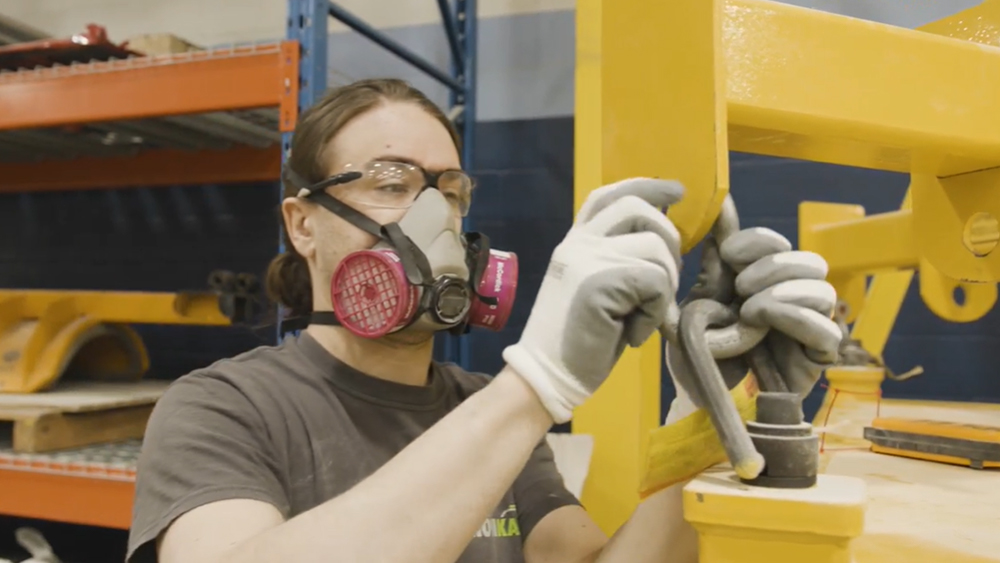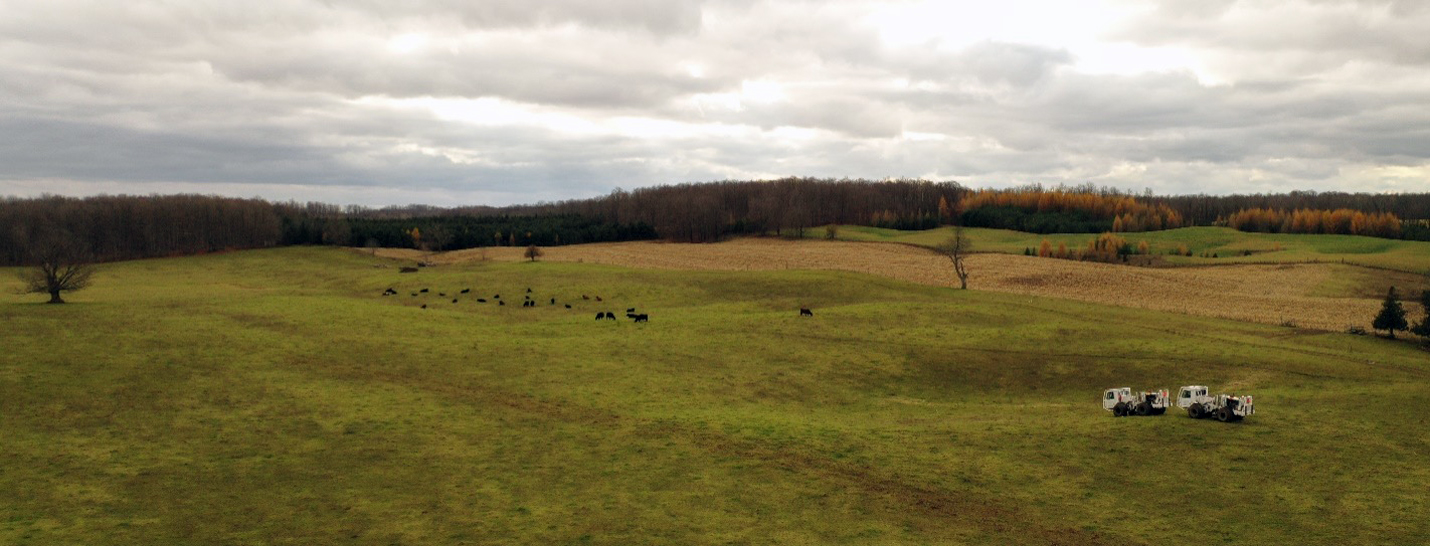Engineering, safety and technical research
The NWMO prepares for the emplacement trial at our Discovery and Demonstration Centre in Oakville, Ont.
Engineering
Over the past three years, the NWMO’s engineering program focused on advancing the design of the deep geological repository and continuing to develop the project’s safety assessments. This included further development of the engineered-barrier system, including manufacturing and testing of several Used Fuel Container and bentonite clay buffer prototypes. We have also been preparing conceptual designs of the deep geological repository for the two potential sites, conducting layout analysis for the Used Fuel Packaging Plant, and establishing the conceptual used fuel transportation system.
In 2022, we renamed our Proof Test Facility in Oakville, Ont., and reopened for it for in-person tours as the NWMO Discovery and Demonstration Centre. This change recognizes the value it provides to people who want to learn more about our innovative work and see it first-hand.
After more than eight years of preparation, a full-scale emplacement trial of the engineered-barrier system began at our Discovery and Demonstration Centre in spring 2022. The demonstration showcased the NWMO’s ability to manufacture, handle and place the engineered barriers in a simulated underground emplacement room that replicates the deep geological repository.
In preparation for the emplacement trial, the engineering team designed, fabricated, installed and commissioned key components of the engineered-barrier system, including copper-coated Used Fuel Containers, bentonite clay blocks and gapfill bentonite clay (pellets or chips). We also fabricated the purpose-built custom equipment that will be required to manufacture and transfer the physical prototypes.
Additionally, we completed the first iteration of a conceptual design for the Used Fuel Packaging Plant. We continue to study options for the best layout to facilitate the process of repackaging the used nuclear fuel into the long-lived Used Fuel Containers.
Our repository engineering team updated the conceptual designs for the repository facility and documented them in the 2021 Deep Geological Repository Conceptual Design Report. Based on these revised designs, associated cost estimates were also updated as input to the 2021 lifecycle cost estimate, which is prepared every five years by the NWMO to comply with the Nuclear Fuel Waste Act and the Canadian Nuclear Safety Commission’s (CNSC) licensing requirements.
Safety and technical research
Safety assessment
For the NWMO, safety is our top priority, both in the near term, when the deep geological repository is operating, and for the long term, after it is filled, sealed off and closed. With the narrowing of the potential sites to two in 2020, the NWMO moved our focus from developing generic safety assessments (often referred to as “case studies”) to starting to develop preliminary site-specific safety assessments. This included conducting regional studies around the siting areas and site-specific supporting studies, and beginning preparatory work for site-specific safety assessments.
Regional studies completed during the period 2020 through 2022 included an assessment of potential climate change effects in the two siting regions, as well as a preliminary flood hazard assessment, including consideration of climate change. For the Saugeen Ojibway Nation-South Bruce area, we published a comprehensive review of the regional petroleum resource potential, which indicates a low potential in the proposed siting area. At both sites, there are no known resources that people in the future might want to extract such as economically exploitable minerals, gas or salt. That means that even if knowledge of the repository is lost in the distant future, the risk of human intrusion into the repository is low.
For both regions, studies on the recent seismic history were also completed to understand the occurrence and frequency of earthquakes in the region. These studies concluded that both siting areas are low risk for earthquakes.
A 3D seismic survey is being performed in the Saugeen Ojibway Nation-South Bruce area.
In site-specific supporting studies during the period 2020 through 2022, our safety and technical research team installed material test modules in a deep borehole at one of the potential repository sites. This will allow us to confirm the real-world performance of materials used in the engineered-barrier system when exposed to actual underground conditions at the site.
The NWMO’s Confidence in Safety reports summarize our present understanding of the safety of each potential site based on information to date, including geological characteristics. The reports explain why we are confident that a deep geological repository can be constructed at either potential site and that both are suitable to safely and responsibly manage Canada’s used nuclear fuel for the very long term.
The NWMO continued to advance the safety assessment work that will examine the safety and performance of the repository and be submitted in support of a licence application once a site for the repository has been selected. Since 2020, our work in this area has focused on developing updated computer models that allow for more detailed analysis of the repository, as well as preparing for the development of site-specific models for the two sites.
Research and development
The NWMO continued to advance our understanding of the science supporting the project through our research and development program. In addition to publishing key review papers on topics such as copper corrosion mechanisms and microbial effects on long-term performance, the NWMO has submitted 70 other technical journal articles during the past three years.
Pandemic-related travel and gathering restrictions meant we had to hold our annual NWMO Geoscience Seminar virtually in 2020 and 2021. This seminar brings together the NWMO’s staff and university experts, as well as our international collaborators and observers – such as those from the CNSC – to share relevant research and development activities. Although we could not meet in person, the virtual format of the seminars allowed a record number of participants to attend. In 2022, we returned to our in-person format.
We were also able to maintain progress in our research activities with our university partners despite the many challenges to in-lab research caused by pandemic restrictions. In 2020, we collaborated with 30 university research groups from 19 universities; in 2021, we supported 29 research projects with 17 universities; and in 2022, we supported 33 projects with 18 universities.


